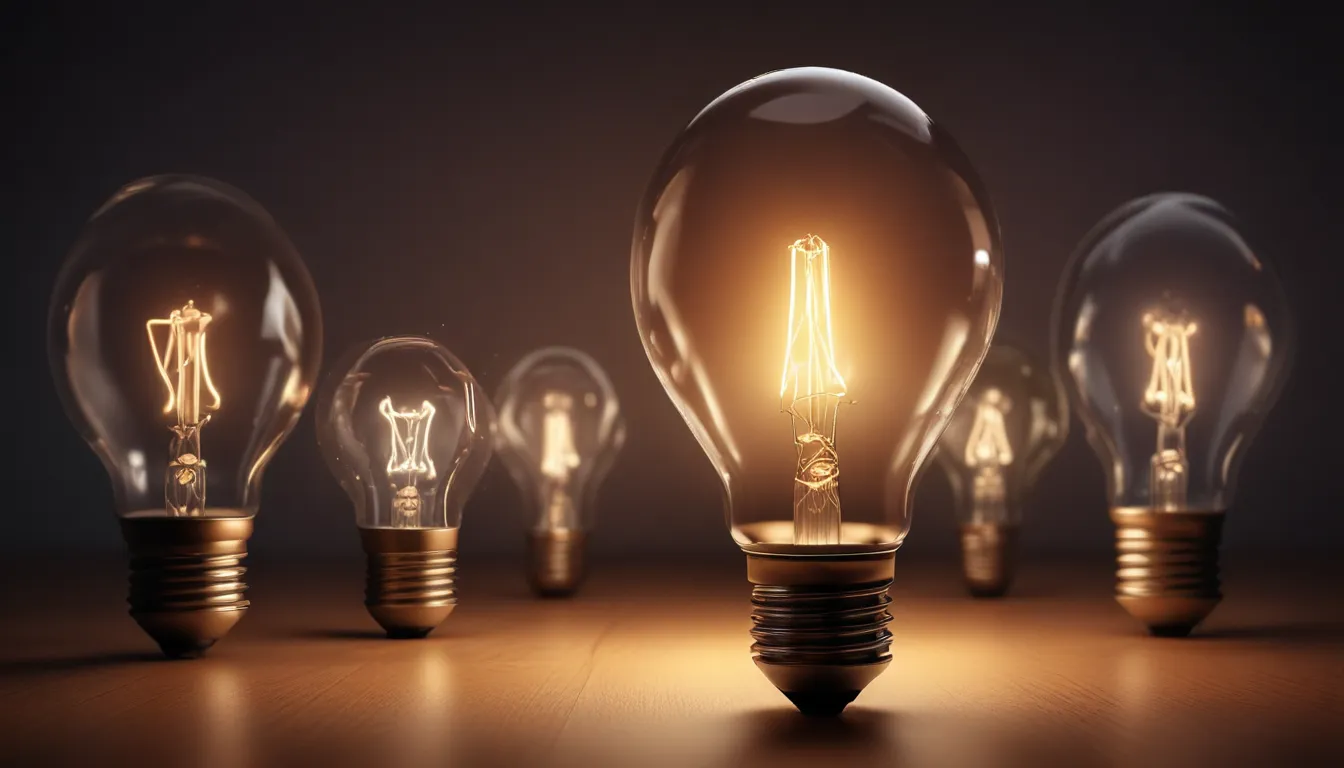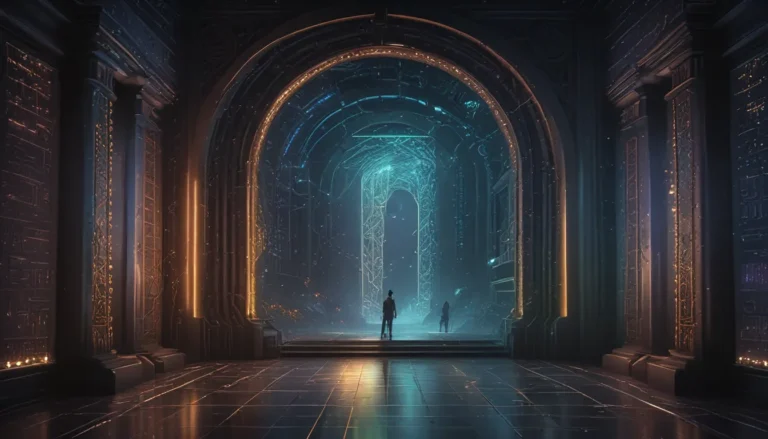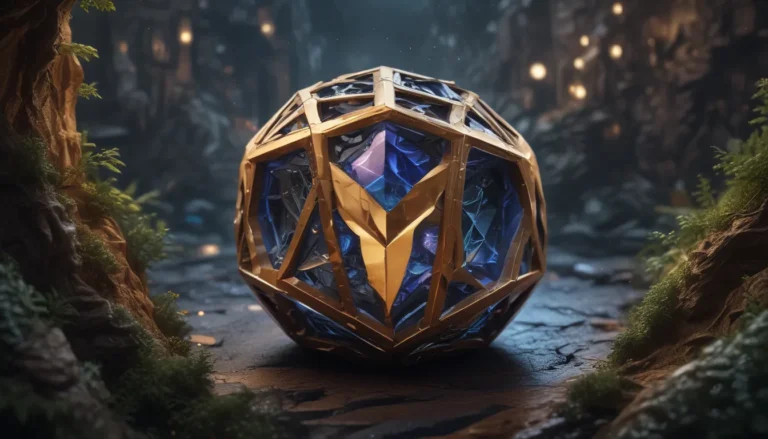A Note About Images: The images used in our articles are for illustration purposes only and may not exactly match the content. They are meant to engage readers, but the text should be relied upon for accurate information.
Welcome to an enlightening journey through the captivating world of light bulbs. Light bulbs play a crucial role in our daily lives by providing us with the illumination we need to navigate darkness. Despite their seemingly simple nature, light bulbs have a rich history and continue to evolve in technology and design. In this comprehensive guide, we will explore intriguing facts about light bulbs, including their origin, types, energy efficiency, and the impact they have on our lives. Join us as we delve into the fascinating realm of light bulbs and shine a light on the wonders they hold.
Unveiling the Origins of Light Bulbs
The inception of the incandescent light bulb is often credited to Thomas Edison, who patented it in 1879. However, it is essential to acknowledge the contributions of several inventors who paved the way for Edison’s breakthrough. Before the advent of incandescent bulbs, carbon filament lamps were utilized for illumination. These early lamps featured carbonized bamboo filaments that emitted a dim, flickering light.
Shedding Light on Various Types of Light Bulbs
Incandescent Bulbs:
These bulbs produce light by heating a filament until it glows. While they are being phased out in many countries due to their low energy efficiency, incandescent bulbs are still commonly used in specific applications.
Halogen Bulbs:
A subtype of incandescent bulbs, halogen bulbs use halogen gas to enhance efficiency and lifespan. They emit a bright, white light, making them popular for automotive headlights and projectors.
LED Bulbs:
Light-emitting diode (LED) bulbs have revolutionized the lighting industry with their energy efficiency and extended lifespan. By utilizing semiconductors to emit light, LED bulbs are available in various colors and designs, making them widely used in residential, commercial, and outdoor lighting.
Fluorescent Tubes:
Commonly found in commercial settings like offices and retail spaces, fluorescent tubes produce light through a chemical reaction in a phosphor coating inside the tube.
The Bright Side: Energy Efficiency and Environmental Impact
According to the U.S. Department of Energy, switching from traditional incandescent bulbs to energy-efficient alternatives like LEDs can result in significant energy savings. LEDs consume up to 75% less energy and last 25 times longer than incandescent bulbs. Additionally, LED bulbs contribute to environmental sustainability by reducing greenhouse gas emissions and lowering electricity demand, thereby reducing reliance on fossil fuels.
Delving Deeper: Facts and Figures
- The Centennial Light, located in a fire station in Livermore, California, has been burning continuously since 1901, earning the title of the world’s longest-lasting light bulb.
- Compact fluorescent lamps (CFLs) contain a small amount of mercury, necessitating proper recycling and disposal to prevent mercury pollution.
- Light bulbs inspired artists to create unique sculptures, such as the “Light of the Light” sculpture by Aleksandra Stratimirovic, consisting of thousands of suspended light bulbs.
- Light bulbs have found their way into space, being used on space shuttles and the International Space Station for specific applications.
Shedding Light on Light Bulb Knowledge
The Brightness Gauge: Lumens
The brightness of a light bulb is measured in lumens, indicating the total amount of light emitted. This parameter allows consumers to select the appropriate brightness level for their needs.
A Splash of Color: Color Temperature
Light bulbs come in various color temperatures measured in Kelvin (K). Lower Kelvin values emit warm, cozy light resembling traditional incandescent bulbs, while higher Kelvin values produce cool, daylight-like illumination.
Shapes and Sizes: Light Bulb Variety
Light bulbs come in various shapes and sizes, each tailored to serve specific purposes. Common shapes include A-series (traditional bulb shape), globe, candle, reflector, and tube lights, each designed to optimize light distribution for specific applications.
Brighter Future: Smart Lighting and Recycling
The advent of smart home technology has made light bulbs even more intelligent, with smart bulbs allowing wireless control through smartphone apps. Users can adjust brightness, color, and even schedule lighting preferences. To reduce environmental impact, recycling light bulbs is crucial, as many types contain small amounts of mercury or other hazardous materials. Recycling ensures proper disposal and reusing valuable components.
Conclusion: Shining a Light on Progress
Light bulbs have evolved significantly since their inception, transforming the way we illuminate our surroundings. From the early incandescent bulbs to the energy-efficient LEDs of today, light bulbs continue to provide better illumination while reducing energy consumption. Understanding the different types of light bulbs, their energy efficiency, and environmental impact empowers us to make informed choices for a sustainable future.
Enlightening Answers to FAQs
Are LED bulbs more expensive than traditional incandescent bulbs?
LED bulbs may have a higher upfront cost but are cost-effective in the long run due to their energy efficiency and extended lifespan, leading to lower electricity bills.
Can I use LED bulbs in fixtures designed for incandescent bulbs?
Yes, LED bulbs are compatible with most fixtures originally designed for incandescent bulbs, but it’s essential to ensure compatibility by checking packaging or manufacturer recommendations.
Do LED bulbs emit heat?
LED bulbs produce significantly less heat compared to incandescent bulbs, making them safer and cooler to touch.
Can I dim LED bulbs?
Many LED bulbs are dimmable, but it’s crucial to check product specifications for compatibility with dimmer switches.
Are there health risks associated with light bulbs?
Modern light bulbs, including LEDs, do not emit harmful levels of UV radiation or significant health risks, but it’s advisable to follow safety guidelines.
In conclusion, our journey through the realm of light bulbs has illuminated the importance of energy efficiency, environmental sustainability, and technological advancements in lighting. By embracing these insights, we can make informed choices that not only light up our lives but also contribute to a brighter and greener future. Let’s continue to shine a light on progress and innovation, one bulb at a time.






